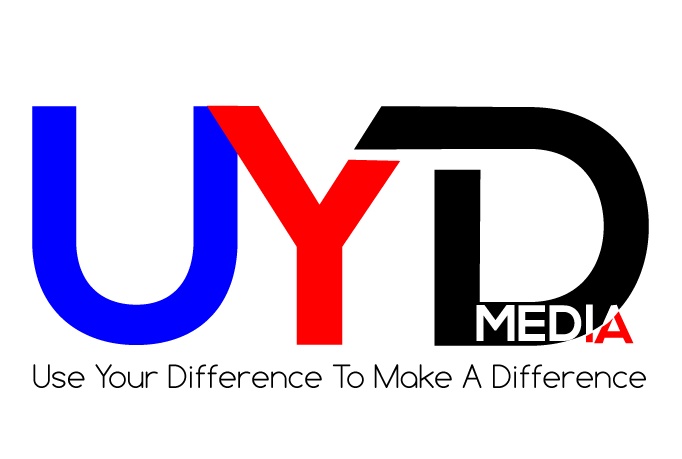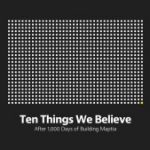Can you talk to us about your background and why you decided to start Hubspot?
In 2004, I met my cofounder, Brian Halligan, at MIT where we were both in business school. Brian was helping venture-backed startups with their go-to-market strategy and he noticed that the tried and true tactics (trade shows, email blasts, and cold calling) that had worked at his previous companies simply weren’t effective anymore. Instead, customers had gotten really good at blocking out interruptive marketing and sales tactics.
Meanwhile, while in grad school, I had started a blog called OnStartups.com where I wrote some of my lessons on startups and entrepreneurship. The blog gained mass appeal and massive traffic which was a little surprising to us both. So, we sat down to analyze why these two occurrences were happening and came to a realization — people do not want to be interrupted by old-school marketing. But, they are always open to reading useful content. We connected the dots on this and decided that this was a much better way for companies to attract visitors, leads and customers. We called it inbound marketing. The challenge was that it was not easy for most businesses to start getting leverage from the Internet. That’s why HubSpot was started.
What problem did you want to solve?
The challenge most businesses had was not a lack of marketing tools — there were many. The challenge was that it was tricky to try and piece all those tools together into a platform that would help them grow. HubSpot addresses this problem by providing a fully integrated, all-in-one platform for businesses.
At Hubspot you talk a lot about inbound marketing. Can you explain that to our audience?
Traditional marketing consists of using your marketing budget (however big or small) and using it to try and interrupt your way into people’s lives in the hopes that they will have some interest and buy something from you. This model has been in place for decades. The problem is that this approach, which we think of as “outbound marketing” has become less and less effective over time. People don’t answer telemarketing calls. They don’t open spammy email. They ignore most ads. As humans, we’ve gotten really good at blocking outbound marketing. Inbound marketing is the opposite. Instead of interrupting people, it is about attracting them with useful/interesting content or tools.
Is it the same with content marketing?
Content is one of the core pillars of inbound marketing. But, they are not the same thing. Inbound marketing encompasses every activity that helps an organization organically reach customers. This includes content creation, but also includes conversion rate optimization, social media, growth engineering and other approaches.
You also talk a lot about Hubspot’s “culture code” what was the genesis of that?
Many years ago, we came to the realization that in order for HubSpot to continue to succeed and grow, we would need to really invest in our company culture. Our first step in that process was assessing our existing culture and figuring out whether generally happy (or not) at HubSpot. Good news is, that they were. The original version of the HubSpot culture code deck focused on identifying the key attributes of people that were correlated with success at HubSpot. We continued to iterate on that presentation deck and eventually shared it with the world in the hopes it might be useful to others. Turns out, we were right. The deck (available at CultureCode.com) has struck a chord with tens of thousands of people — it’s now been viewed over 1.6 million times.
How important do you think culture is for startups today?
Here’s a key analogy that we use when thinking about culture: Culture is to recruiting as product is to marketing. Attracting and retaining top talent is just as, if not more important for startups as it is for established businesses. And, making an effort from day one to be a company where your employees are happy, enjoy coming to work, and enjoy the work they do there can make all the difference for your success down the line. Having said that, not every startup needs to (or can afford) to create a 128 slide presentation deck on culture. But, at least identifying what you want to the culture to be, and what kinds of people you want on the team is an exceptionally important thing for founders of startups to do.
How do you maintain this culture across your international locations especially where business practices are different from the U.S?
We recently hired a Director of Culture & Talent at HubSpot who is not only focused on making sure that our culture remains in tact and that we are making HubSpot the most enjoyable and effective workplace that it can be but also making sure that our culture is consistent across departments, offices, and countries. We aim to make sure that events taking place at our headquarters are replicated in our regional locations as well and that key company meetings and get togethers are held at convenient times and made available as a recording after the fact.
Those are some of the tactics. But strategically, and philosophically, the most important thing we have done to ensure our culture is applied across our different offices is to make sure that the same core beliefs we have in our headquarters are shared by the other offices. We hire the same kinds of people world-wide. They need to be humble, effective, adaptable, remarkable and transparent. Though each office is encouraged to weave in aspects of their local country’s culture, we ensure that the core tenets stay constant.
Let’s talk millennials and content marketing. In your opinion what are the best ways for millennials to build platforms and position them selves for success that engages with their intended audience.
One of the key advantages millennials have is that they grew up with the Internet and are very comfortable with technology. My advice to them would be to lean into that technology skill and get into the habit of consistently creating content — and measuring the effectiveness of it. There is no substitute for iteration. And, the potential rewards are amazing. Whether they’re building their own personal brand — in order to increase their job prospects, or building a network so that they have a prospective audience when they start a company, getting comfortable with producing content online is key.
Ok shifting gears here to entrepreneurship. Many millennials entrepreneurs often find themselves having to decide between bootstrapping and seeking investment. What are your thoughts on both?
Generally, my advice is for first-time entrepreneurs not to jump too quickly into fund-raising mode. Turns out, raising capital is a very, very hard thing to do — even in relatively good times, as we have now. Instead, they should focus on learning about their customers and getting a product into their hands as early as possible. So, start with bootstrapping/self-funding and wait until there’s some traction and some learnings before attempting fund-raising.
Have you found that being multicultural has helped you in the business world?
Yes, I think it has helped in a couple of ways. First, it just helps to have exposure to a diverse set of people and backgrounds. I think this diversity leads in the long run to better ideas and more creativity. Secondly, I think it helps me be a more empathetic leader. Or, at least I hope it does.
Before you go how do you use your difference to make a difference?
At my core, I like to teach and help. What I hope I’m able to do is take some of the things I’ve learned from a lifetime of stumbles and getting things wrong and share those lessons with others. It’s why I love writing/blogging. It’s why I started HubSpot (many of the early years were all about teaching people about a new way of marketing). My hope is that through my various efforts, though I may not make a significant direct difference, that I’ll have contributed in a small way to the difference that others will go on to make.




